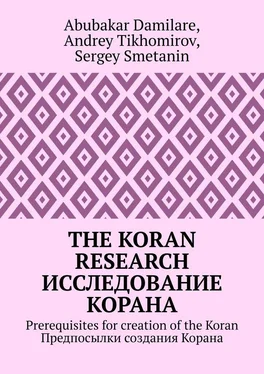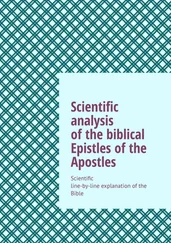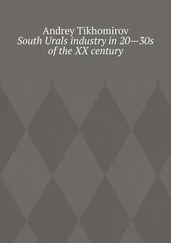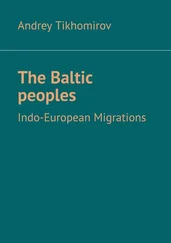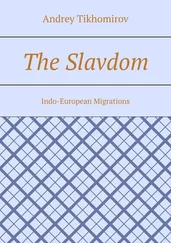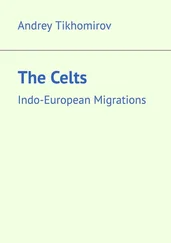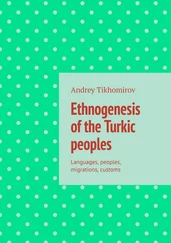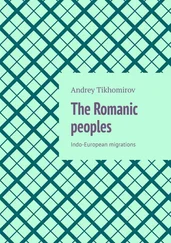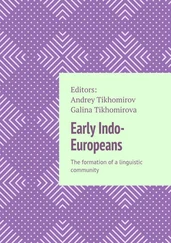The Koran research. Исследование Корана
Prerequisites for creation of the Koran. Предпосылки создания Корана
Andrey Tikhomirov
Abubakar Damilare
Sergey Smetanin
© Andrey Tikhomirov, 2018
© Abubakar Damilare, 2018
© Sergey Smetanin, 2018
ISBN 978-5-4493-4579-0
Создано в интеллектуальной издательской системе Ridero
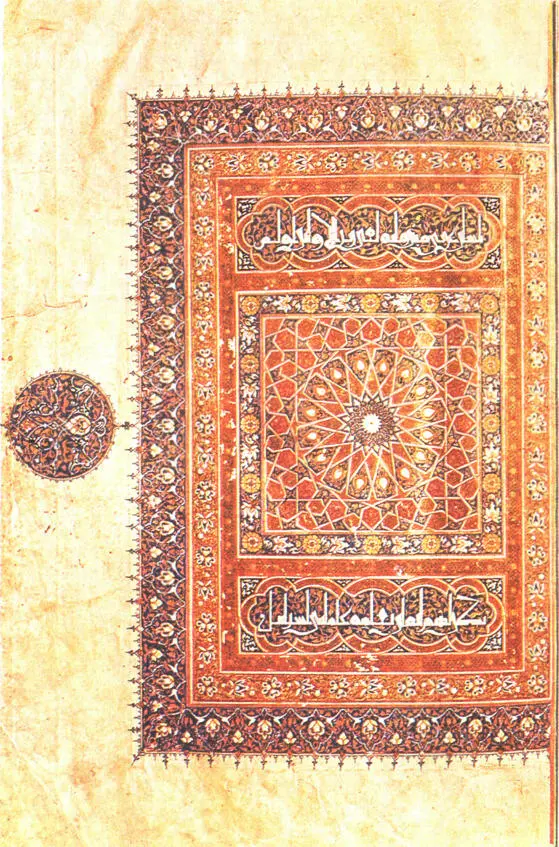
The Qur’an of Argun Shah. Egypt. 1368—1388.
In the artistic treasury of mankind, one of the most important places belongs to the medieval art of peoples inhabiting now large areas of Asia and Africa from the shores of the Atlantic Ocean to Indonesia and from the Mediterranean to the upper Nile. The main focus of the formation of this art were the countries of the Near and Middle East, North Africa and Southern Spain at the time when a huge feudal state, the Caliphate, was formed on their territory. It was created by the Arabs who inhabited the Arabian Peninsula.
The culture of settled and nomadic tribes of Arabia is known since ancient times. In the south, in the fertile Yemen, and in the western part of the peninsula (the Hijaz region), as early as the 1st millennium BC, there were rich kingdoms. Their prosperity, as well as the emergence of large-scale Arab cities, was determined by a favorable economic situation on the world caravan routes and extensive mediation trade with Egypt, Asia and India. Especially the people of the city of Hijaz became rich – the agricultural Medina and the commercial Mecca.
The main population of Central and Northern Arabia was cattle breeding nomadic tribes. They were called Bedouins – «people of nomadic life.» In search of pastures and water sources, Bedouins with herds of camels roamed the boundless arid steppes and semi-deserts of Arabia, crossed by dry riverbeds. The tent served as tents or tents, in which lived individual families. Each tribe believed in his patron god, performing sacrifices to his rough stone idol. Arabs deified the forces of nature, heavenly bodies, stones, trees, streams.
The general Arabian sanctuary was the Kaaba (literally: the cube) in Mecca.
The Arabian nomads created beautiful verse-songs, usually performed under musical accompaniment. The storytellers memorized the verses by heart. In Bedouin oral poetry, in vivid images, that which surrounded man was glorified – severe nature, people, animals. Poetry, characterized by simplicity, vitality, sincere feeling, were real works of poetic art. Moreover, the ability to write poetry was valued by Bedouins no less than military valor.
The population of Arabia lived in conditions of the disintegration of the tribal system and the formation of class society. One of the means of uniting numerous Arab tribes into a single state was the Muslim religion, or Islam. In Arabic, «Islam» means «submission», and the name «Muslims» comes from the word «Muslim» -translated to Allah, in the plural – «Muslimon.» Polytheism of the tribes, Islam opposed the cult of the one, only, eternal and all-powerful God of Allah.
The founder of the religion, an Arab merchant from the city of Mecca, Mohammed, on the representation of Muslims, is the messenger of Allah, the last prophet, sent to the people with God’s word embedded in his mouth. The revelations of God to Muhammad were collected by the followers of the prophet in the Qur’an. In this Holy book of Muslims for the first time received a clear design in written form in the Arab language as a language of religion, the state, literature and science. Founded by Muhammad, the Muslim community-the core of the future state-became the religious and political center of the unification of Arabia. However, at first Muhammad and his followers were subjected to severe persecution. Therefore, in 622 there was a resettlement (in Arabic: Hijra) of the creed and his entourage from Mecca to Medina, which marked the beginning of the Muslim chronology, which is still on the lunar calendar. By the end of 630, as a result of a long struggle, Muslims had subjugated all of Arabia. The pagan Kaaba was recognized as a common Muslim Shrine, and the idols surrounding it were broken. The center of the state became a Mecca. Pilgrimage to Mecca was imputed to Muslims as a duty. During prayers, performed five times during the day at the exact time, Muslims are facing in this direction.
«Deputy» Muhammad became the caliphs – both secular and spiritual leaders of the state.
At first, especially revered, «righteous» caliphs – Abu-Bekr, Omar, Osman, Ali – and when they replaced the caliphs of the Umayyad dynasty (661—750) Arabs conquered vast territories in Asia, Africa and South-Western Europe. Their military expansion was opposed by such powerful powers as Byzantium and Iran. However, weakened by the long and exhausting internecine war, they could not stand the rapid onslaught of the young Arab state. The Arabs conquered the Byzantine Empire, Syria and Palestine (640), Egypt (642) and the region of North Africa – the future of Tunisia, Algeria and Morocco (in 709 troops commander Musa Ibn Nusayri came to the shores of the Atlantic ocean). In 633—651, the Arabs conquered all the provinces of the vast Iranian state of the Sassanid dynasty, which covered the lands from the Euphrates to modern Afghanistan and from the Caucasus to the Persian Gulf. In 711 the armies of the Arabs, together with the forces of the Berbers (the indigenous population of North Africa) under the leadership of Tariq Ibn Ziyad compressed Strait through the rocks (he later named Gibraltar, meaning «Mountain of Tariq») invaded from North Africa to the Iberian Peninsula. Began the conquest of al-Andalus-so the Arabs called Spain. Most of the country was captured, with the exception of the inaccessible Northern mountain regions. After crossing the Pyrenees, Muslims tried to seize southern Gaul, but were defeated by the military, the Franks in the battle of 732 at Poitiers. They were forced to stop further offensive in Western Europe and moved beyond the Pyrenees. At the same time, Arab troops penetrated far to the East, conquering the whole of Central Asia by the middle of the 8th century and reaching the borders of China. So within a relatively short time, there was a Grand feudal state – the Caliphate. In the hands of the caliphs were vast lands and untold wealth.
Going beyond the Arabian Peninsula and rushing to the East and West, the Arabs, most of yesterday’s nomads, faced with the culture of countries where in ancient times there were centers of world civilization. Beautiful cities, decorated with palaces and temples, statues and paintings, became at first mainly a source of military production. It took a long time for Muslim conquerors to assimilate the spiritual and aesthetic values of the conquered peoples. The Caliphate included lands with traditions of Greek and Roman culture (for example, rich Byzantine colonies – Syria and Palestine). On the other hand, the impact of Iranian culture, which reached a special solemnity and perfection in the Sasanian era, was greatly affected.
Born from a combination of its own pre-Islamic past and the traditions of other ancient civilizations, Arab culture has achieved great and independent success in many areas of knowledge and artistic creativity. Arabs made a serious contribution to the world literature and poetry, philosophy and medicine, mathematics and astronomy, geography and history, created beautiful and original works of art.
The culture of Muslim countries has influenced many States in different parts of the world, has become a link between antiquity and the middle ages of Western Europe.
Читать дальше
